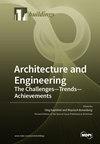基于风洞试验数据的矩形建筑风荷载计算程序,用于初步结构设计
IF 3.1
3区 工程技术
Q2 CONSTRUCTION & BUILDING TECHNOLOGY
引用次数: 0
摘要
在这项研究中,我们开发了一种风荷载计算程序(WCP),能够在初步设计阶段相对精确地预测风荷载。首先,我们进行了风洞试验,以确定计算风荷载的必要因素以及影响这些因素的变量。试验考虑了方形建筑的形状,并结合四个地面粗糙度值、十一个边长比(D/B)、四个长宽比(H/BD)以及 0° 至 90° 的风向,测量了风力系数和功率谱密度。风功率系数和频谱系数的制定是为了根据不同条件计算风荷载。WCP 计算基于使用共振风荷载计算荷载组合系数。最后,利用实际工程模型(内核(A)型和外核(B)型)将风洞试验获得的风荷载与 WCP 预测的风荷载进行了比较。在风荷载和层流风荷载作用下,A 号楼的 WCP 和风洞试验反应相似。此外,B 号楼的误差比 A 号楼的误差大,但当建筑物承受组合风荷载和层流风荷载时,结果相似。本文章由计算机程序翻译,如有差异,请以英文原文为准。
Wind-Load Calculation Program for Rectangular Buildings Based on Wind Tunnel Experimental Data for Preliminary Structural Designs
In this study, we developed a wind load calculation program (WCP) capable of predicting wind loads with relative precision during the preliminary design phase. First, wind tunnel tests were conducted to identify the essential factors necessary for calculating wind loads and the variables influencing these factors. Square building shapes were considered, and the wind force coefficients and power spectral density were measured by combining four ground roughness values, eleven side ratios (D/B), four aspect ratios (H/BD), and wind directions ranging from 0° to 90°. The wind power coefficient and the spectral coefficient were formulated so that the wind load could be calculated according to various conditions. The WCP computations were based on the calculation of the load combination coefficient using the resonant wind load. Finally, the wind loads obtained from the wind tunnel tests were compared with those predicted by the WCP using an actual project model (inner-core (A) and outer-core (B) types). Building A yielded similar WCP and wind tunnel experimental responses when subjected to wind and laminar wind loads. Additionally, Building B yielded a larger error than that of Building A, but similar results were obtained when buildings were subjected to combination and laminar wind loads.
求助全文
通过发布文献求助,成功后即可免费获取论文全文。
去求助
来源期刊

Buildings
Multiple-
CiteScore
3.40
自引率
26.30%
发文量
1883
审稿时长
11 weeks
期刊介绍:
BUILDINGS content is primarily staff-written and submitted information is evaluated by the editors for its value to the audience. Such information may be used in articles with appropriate attribution to the source. The editorial staff considers information on the following topics: -Issues directed at building owners and facility managers in North America -Issues relevant to existing buildings, including retrofits, maintenance and modernization -Solution-based content, such as tips and tricks -New construction but only with an eye to issues involving maintenance and operation We generally do not review the following topics because these are not relevant to our readers: -Information on the residential market with the exception of multifamily buildings -International news unrelated to the North American market -Real estate market updates or construction updates
 求助内容:
求助内容: 应助结果提醒方式:
应助结果提醒方式:


